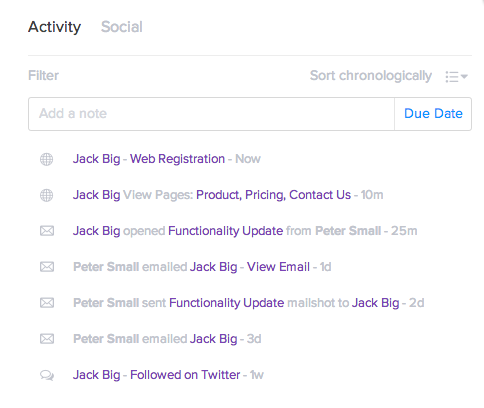In recent years the role of marketeers has evolved to focus on achieving tangible goals by enabling salespeople to sell more effectively.With the automation of many marketing functions, such as lead nurturing, greater emphasis is being placed on the creation and dissemination of quality content.
Enabling salespeople requires greater information that allow insights into both the motivation of the buyer, and the historical context of the relationship. Particularly in smaller organisations there is also the ‘multi-role’ nature of responsibilities, requiring all outward facing staff to be able to respond effectively to clients needs.
Motivation of the Buyer
With most product research now being done by buyers without personal interaction, salespeople are increasingly involved later in the sales process. In this new environment a salesperson’s role is more complex, requiring them to adapt to the buyer’s situation, and employ creative, adaptable ways in which to convey benefits.
Havard Business Review calls this insight selling, and Mark Lindwall at Forrester says selling in the traditional sense is “watered-down whiskey” when compared with what is required today.
With a greater degree of product research occurring prior to direct contact being made, marketeers hold more of the sales responsibility. Marketeers need to know the key reasons why people buy, and use tools to track and segment the information that is being viewed by leads. Website copy, downloadable content and emails should all be personalized and tracked to build the profile of a customer.
This also allows marketeers to nurture leads further by producing tailored content that resonates with a particular subset of customers. But perhaps even more importantly they can pass on insights gleaned around what is motivating the lead to progress.
Historical Context of the Relationship
Selling a complex product requires a large amount of interaction to discover the true needs and pain points of the customer. More than ever this interaction occurs across multiple channels including social, web, email and physical events. However, when the salesperson does become involved, it’s important they understand the context of the relationship up until the point that they became involved.
A chronological order of activity with key relationship milestones highlighted is key.

This enables a salesperson to know the level of understanding a buyer has and contributes to a more productive conversation.
Multi-Role Players
Smaller organisations have minimal division of labour and more focus on purely serving clients by any means possible. This type of environment should be less about commanding and controlling with constraining mechanized process. Rather, systems should provide shared resources on client accounts that offer a collaborative view.
Giving autonomy to outward facing employees and allowing all of them to serve the customers’ needs with transparency is key. It allows more meaningful conversations to take place in the absence of the primary account contact.
To quote Scott Santucci from Forrester
“Sales enablement is a strategic, ongoing process that equips all client-facing employees with the ability to consistently and systematically have a valuable conversation with the right set of customer stakeholders at each stage of the customer’s problem-solving life cycle to optimize the return of investment of the selling system.”
And so enabling salespeople for smaller organizations should not need be a role unto itself, but rather a goal that every outward facing employee can be capable of pursuing. Given the right tools that provide insights around buyer behaviour and contact history, sales enablement doubles up your sales force.
Photo Credit Jaumes Escofet / Flickr

